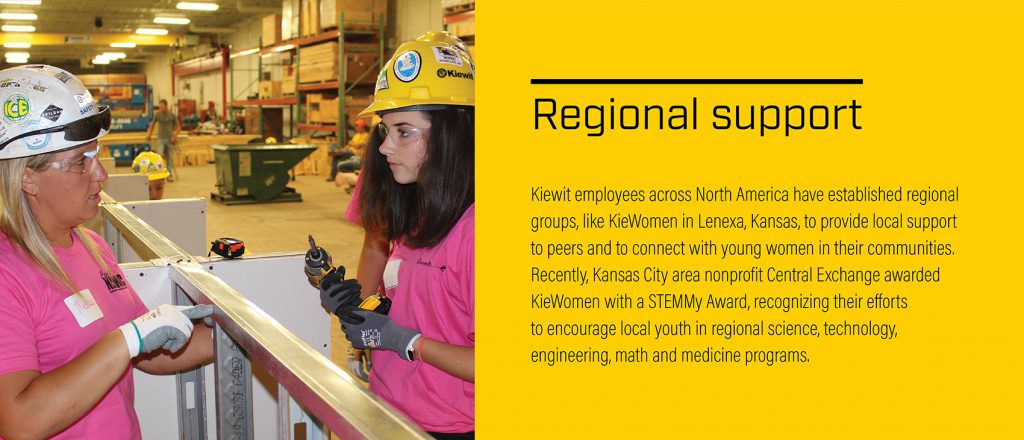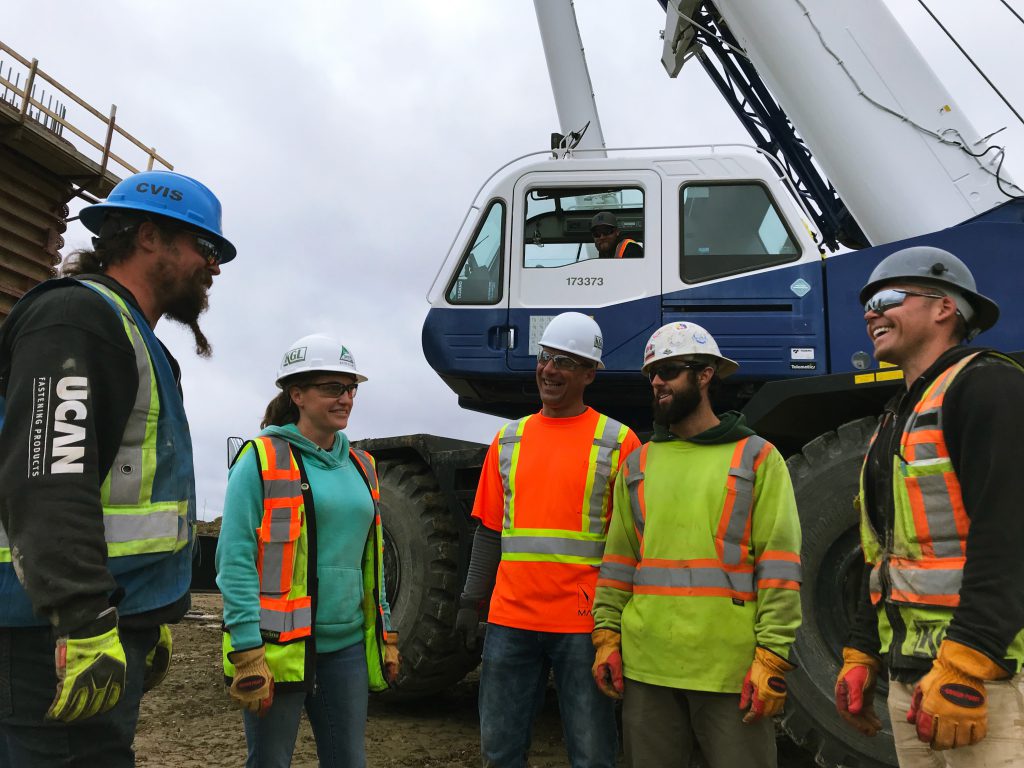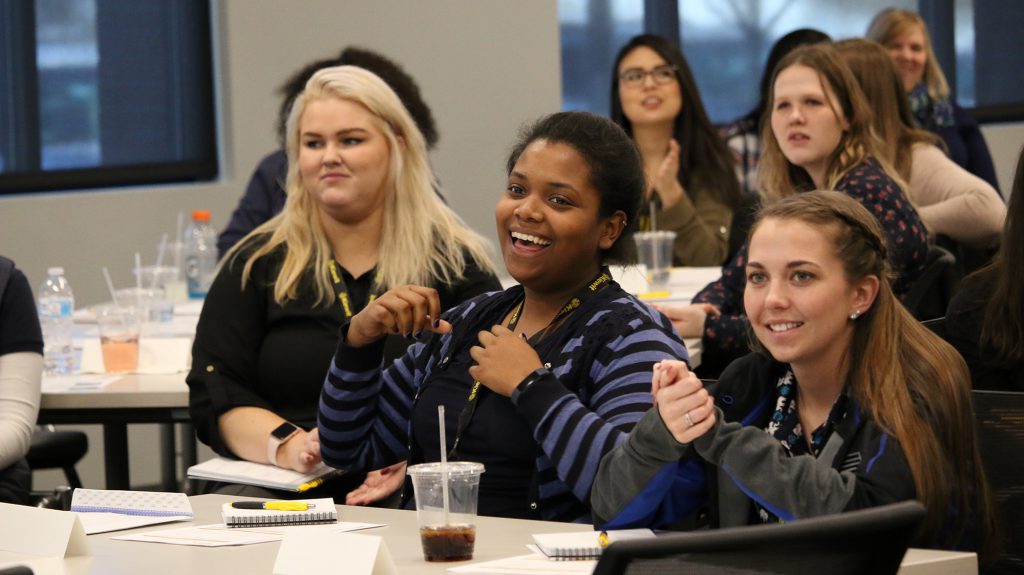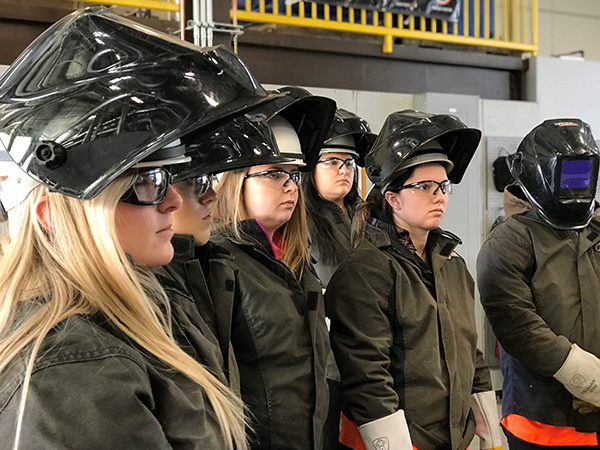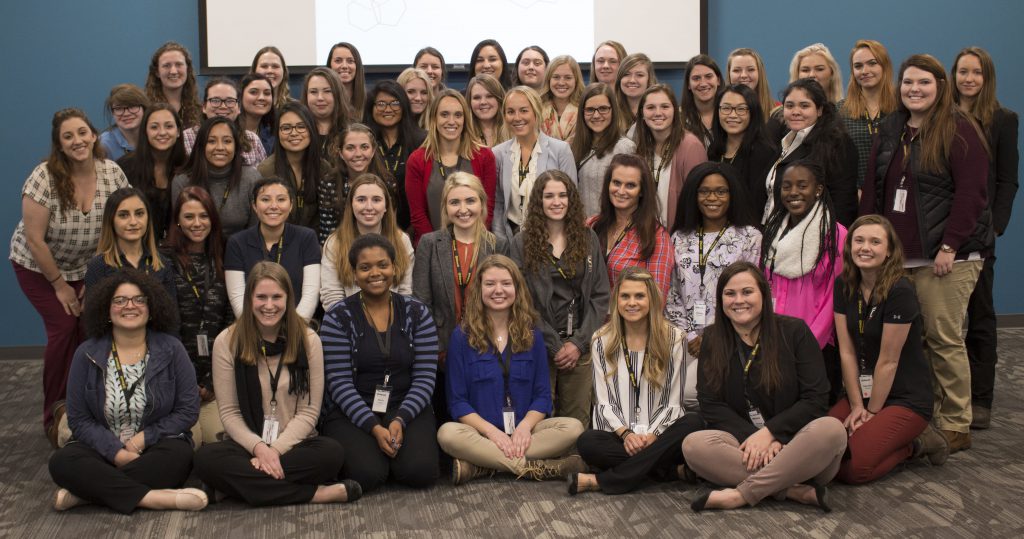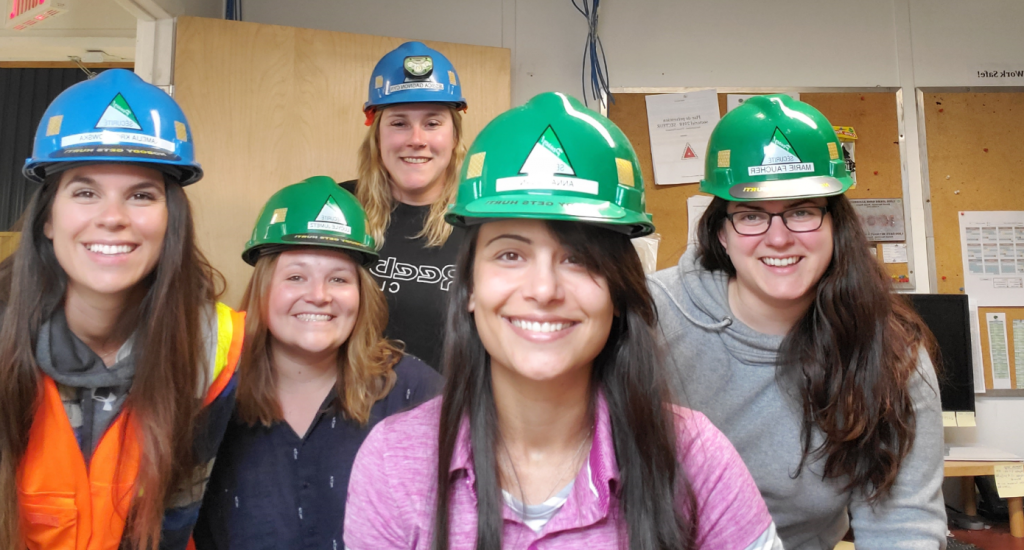Long before she stood atop a power plant overlooking the Pacific Ocean, Pegah Skarsgard saw a future in construction. As the daughter of a project manager of refineries, power has always been in her blood.
“I was about four or five years old when I first stepped onto a project site. My dad kept stopping to talk to the crews and I remember those interactions and everything happening around me seemed so — extraordinary.”
Today Skarsgard leads her own team in building a new, energy-efficient combined cycle natural gas plant in Huntington Beach, California. She knew she would be a project manager someday, but admits it wasn’t always easy to see the path forward.
“Visualizing myself in the role was harder,” recalled Skarsgard. “It’s different in the office where you see more women. In construction, when I looked up, I never saw another woman above me.”
More than 1,500 miles north of Southern California’s coastline, Katie Allan echoed similarities in her own leadership journey in Western Canada. Now assigned to the massive Southwest Calgary Ring Road project, Allan recently wrapped up work on the Dickson Dam Spillway Gates Replacement Project in Alberta where she was project manager.
“I never saw my gender as a roadblock, but it does make it a little harder to see yourself there if there’s no one already there who looks like you,” she said.
“Working out on a project is a completely different lifestyle and you have more of a team environment,” said Katie Allan, seen above with Scott Wallace, Johnny Jones, Gordon Gregory, Jonathan Bontos-Brodeau and Spencer White. All are part of the team working on the Southwest Calgary Ring Road project in Calgary, Alberta.
Allan and Skarsgard aren’t the only ones who recognize the value in representation. Across the construction industry, there is a concerted effort to get more women in the door and into leadership roles.
“For me, it’s pretty simple. It’s an untapped resource,” said Kiewit Board Member and retired Caterpillar, Inc. CEO Doug Oberhelman. “There is a bunch of very smart people out there who make up a small percentage of our workforce.”
The U.S. Bureau of Labor Statistics estimates women make up around 9% of the construction industry, with numbers only slightly higher in Canada. Increasing that number would not only help alleviate the stress of the current labor shortage, but research indicates it would also improve industry progress overall.
“Diverse teams and perspectives help break up groupthink and lead to more innovative solutions — better results,” explained Kiewit Talent Development Director Alicia Edsen. She adds, “We’re fortunate to have a management team that not only believes in the need for change, but is also willing to play a key role in influencing it.”
Kiewit leaders like Edsen and Senior Vice President Doug Glaser are focused on strategic solutions that start with a more intentional search for qualified female candidates. Those solutions include investing more engagement in early science, technology, engineering and math (STEM) education, more female representation during recruiting events, and targeted recruiting and training efforts through events like the Women in Construction and Engineering Leadership Conference and the Future Women in Kiewit Summit.
“We have to increase that talent pool and after that, we need to make sure we’re providing the right mentorship and succession training to move those employees into leadership roles,” said Glaser.
More than 500 college students exhibiting strong leadership qualities have attended Kiewit’s Women in Construction and Engineering Leadership Conference (WCELS) since 2008. Attendees are hand-selected after submitting an application, an essay and references. During the conference, they hear from Kiewit leadership and network with their peers. They also participate in a variety of leadership-based exercises, receive training in Kiewit’s state-of-the-art learning labs, and visit projects under construction.
More than 500 college students exhibiting strong leadership qualities have attended Kiewit’s Women in Construction and Engineering Leadership Conference (WCELS) since 2008. Attendees are hand-selected after submitting an application, an essay and references. During the conference, they hear from Kiewit leadership and network with their peers. They also participate in a variety of leadership-based exercises, receive training in Kiewit’s state-of-the-art learning labs, and visit projects under construction.
More than 500 college students exhibiting strong leadership qualities have attended Kiewit’s Women in Construction and Engineering Leadership Conference (WCELS) since 2008. Attendees are hand-selected after submitting an application, an essay and references. During the conference, they hear from Kiewit leadership and network with their peers. They also participate in a variety of leadership-based exercises, receive training in Kiewit’s state-of-the-art learning labs, and visit projects under construction.
Mentorship, development and candid conversations have also been key to the rising number of women at Caterpillar says Denise Johnson, Group President of Resource Industries. A few years ago, Caterpillar began hosting an Annual Women in Leadership Conference and actively engaging thousands of employees in programs like reverse mentoring, inclusion workshops and its Breakthrough Leadership Sessions.
“The leadership training is focused on giving women the tools to successfully communicate and navigate their careers with an emphasis on inclusion. Since 80% of our population is men, we also developed targeted unconscious bias training for men,” said Johnson.
The sessions themselves are important, but Johnson says it’s what happens after that’s made the biggest impact.
“When employees go back to their peers and talk about it, it’s like their eyes have been opened in a different way,” said Johnson. “It makes people aware that they have biases and helps them see the things that drive inclusion, versus exclusion.”
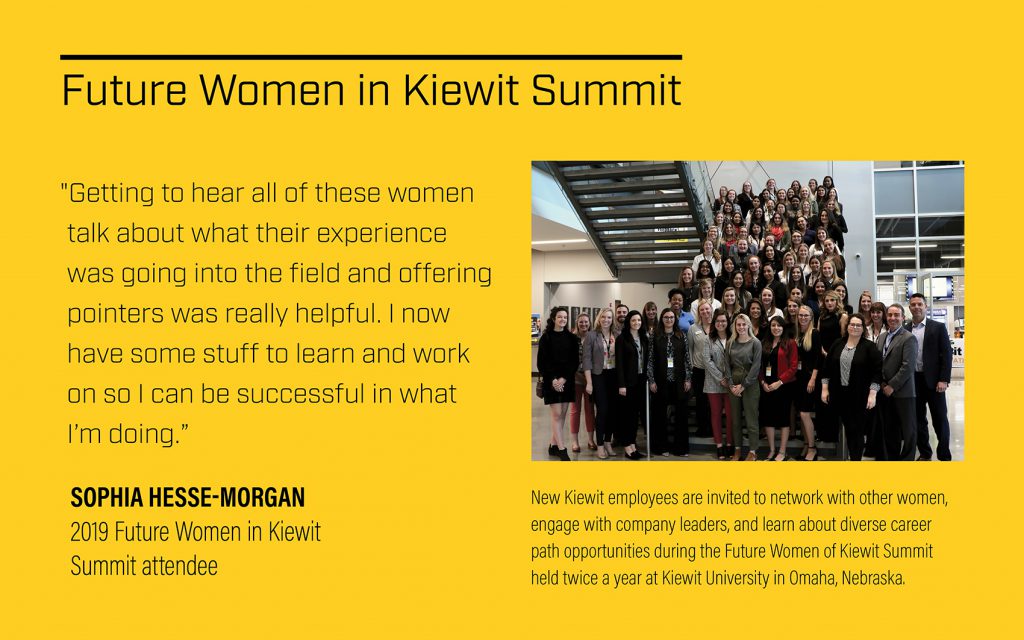
Skarsgard says one example of that bias is when people use words like “aggressive” when describing a woman’s leadership style. She points out, “It’s really important for leaders to be driven, but in the field people aren’t used to seeing women in those roles.” Her advice to women: “Own your position and your worth, but also choose your battles. You don’t need to go to war for everything.”
Skarsgard and Allan agree that it’s important for men to be actively involved in the conversation.
“Women struggle with things like impostor syndrome where they don’t place as much value on their accomplishments. They also have difficulty finding good mentors,” said Allan. “I don’t think men realize that. If they don’t know, they can’t actively change the way they approach or implement something.”
“We won’t solve everything overnight,” said Kiewit Chairman and CEO Bruce Grewcock. “But empowering our people to talk about these things is going to help us work toward more substantive change, and ultimately a stronger, more diverse workforce.”
“We are proud to say that our engineering office at the Raglan Mine in Nunavik (Quebec, Canada) is at a 50/50 gender balance. I have personally never seen this in the mining industry. It is incredible. Our director, Frédéric Boucher, did not hesitate to send talented women to the mine and give them important roles.” – Anna Canan, Kiewit lead estimator (front), pictured here with Kamelia Krolikowska, Lucyle Jumets, Jessica Gagnon Cyr and Marie-Elaine Faucher.
So far, those changes range from making sure women have access to better fitting field gear to incorporating new policies, like extended family leave that allows for more time and flexibility after childbirth or adoption. Kiewit has also standardized mother’s room requirements across the organization. Some challenges, though, lie beyond a one-size-fits-all policy.
“Local access to child care is a challenge on the project. When you work in the office, you can come in around 7:30 or 8 a.m.” That doesn’t always work with a construction project’s schedule demands. “My first meeting is at 6:30 a.m. and none of the day cares around me open until 7 a.m.”
Skarsgard emphasized that some obstacles also require a shift in the perspective of women.
“Sometimes, when life gets complicated, we quit before we give ourselves a chance,” she said. “I want women to know that when it comes to work or family, you don’t have to choose one or the other.”
She says that’s a topic that’s always bothered her.
“I’ve never heard anyone ask a man how he balances family and a career.” And as someone who manages a lot of men, she knows balance can be a challenge for everyone.
“The difference is, men are always looking for the next step, but women tend to look at what might hold them back. That’s why I want to help women in construction. If we start giving support to each other, we can get more women to the top.”
Allan’s advice to women in the industry is to take the time to build a strong support system, especially mentors, whether they be men or women.
“Find a person you work with directly or indirectly — someone you trust for feedback to tell you if you need to improve on something, but to also tell you what you’re doing well and when you’re being too hard on yourself,” she advised.
Both Kiewit leaders say they’ve seen a lot of change in the industry over the past couple of years and they’re excited to see the impact it has on future generations.
“Recently a craft superintendent told me, ‘I want you to talk to my daughter because I really want her to be like you one day,’” recalled Skarsgard. “I think moving in this direction is even going to change people’s families because they’ll encourage their kids and tell them, ‘See, you can do it.’”
